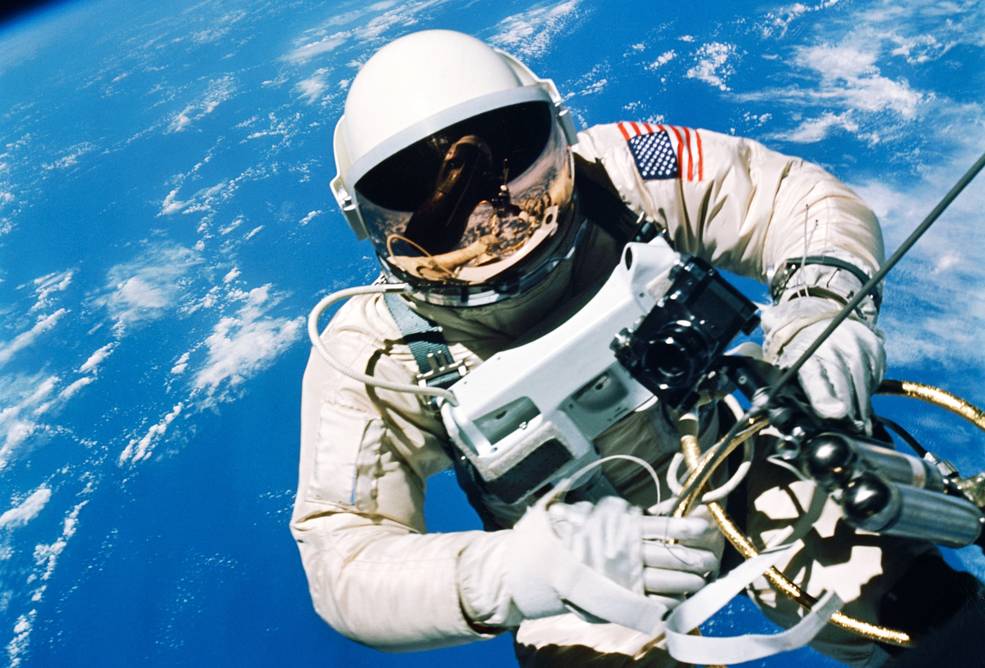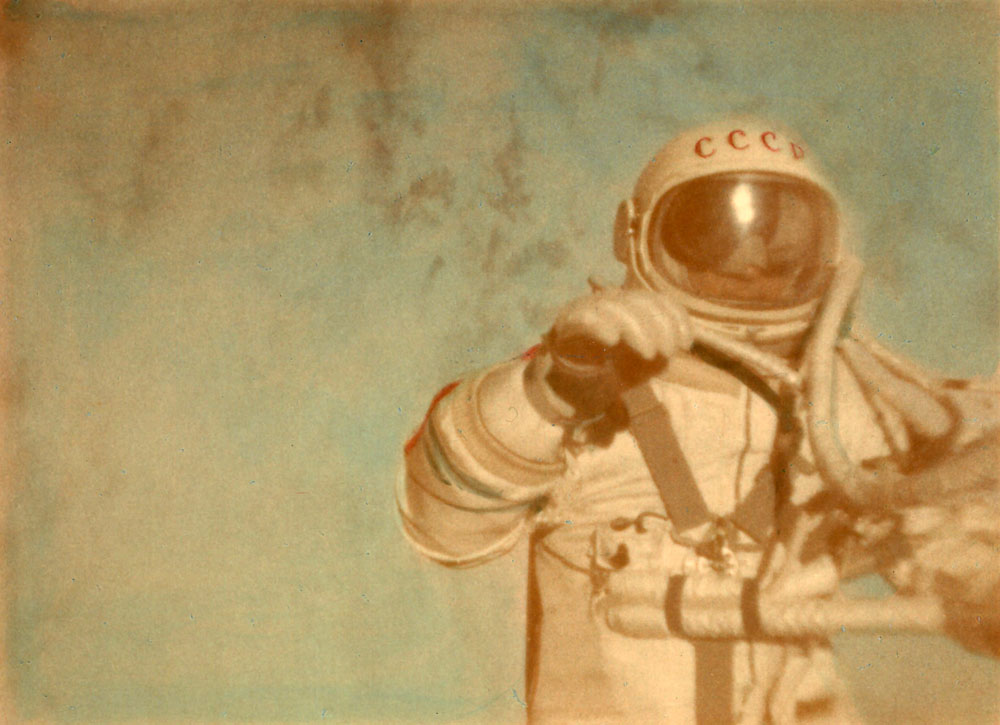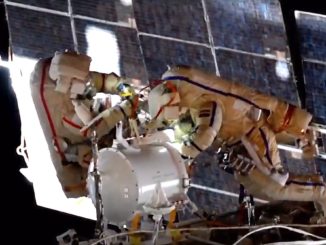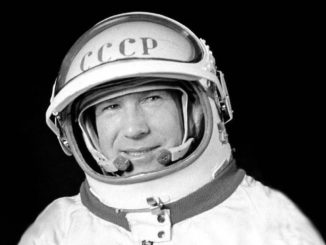STORY WRITTEN FOR CBS NEWS & USED WITH PERMISSION

Two-and-a-half months after cosmonaut Alexey Leonov became the first human to walk in space, NASA astronaut Ed White floated out of his cramped Gemini 4 capsule 50 years ago Wednesday to become the first American spacewalker.
In the five decades since then, astronauts and cosmonauts have chalked up 413 spacewalks, including 187 totaling a combined 49 days to build and maintain the International Space Station and 23 covering nearly seven days to service the Hubble Space Telescope.
While spacewalks have become a relatively common part of modern spaceflight, working in the vacuum of space while moving at five miles per second and experiencing huge temperature swings passing into and out of Earth’s shadow will never be routine.
“Every time we send our astronauts outside the International Space Station, we’re doing risk trades to make sure they’re going to be safe and accomplish the tasks they need to accomplish,” astronaut Mike Foreman, veteran of five spacewalks, or EVAs, said in an interview. “Spacewalking will probably never get routine, at least not in the foreseeable future.”
And it certainly wasn’t routine for Leonov, a 30-year-old cosmonaut who became history’s first spacewalker on March 18, 1965. Leaving crewmate Pavel Belyayev behind inside the Voskhod 2 spacecraft, Leonov spent about 12 minutes floating outside, marveling at the view, before heading back to a makeshift airlock.
“The ability to see the whole Earth as a globe, pretty much, is something that was extremely attractive,” he said in a recent NASA interview. “And I could easily recognize the Black See, the Crimea, Romania, Bulgaria, Italy, (the) Baltic Sea, and it was all within minutes, if not seconds.”
Equally impressive: the “enormous, unbelievable silence.”
“I heard how my heart was pounding,” he recalled. “I could hear myself breathe. I remember Arthur Clark and Stanley Kubrick who, while doing ‘Space Odyssey,’ they worked a lot on the sound track, and the way the crew members used to breathe during this movie was very impressive.”
And the stars, he said, “were very bright, there were a lot of them. What was interesting is they were everywhere, they were above and they were beneath. On the ground, we can only see stars up in the sky. In space, they are everywhere.”
The thrill quickly turned into drama on the high frontier. Because of the stiffness of his pressurized suit, and because his fingers had worked their way out place in the suit’s gloves, he could not get into the airlock feet first as planned. Sweating with exertion, he eventually had to partially deflate his suit before managing to pull himself in head first and then struggling to turn around and secure the outer airlock cover.
“I knew I might be risking oxygen starvation, but I had no choice,” he wrote in an article for the Smithsonian Institution’s Air and Space magazine. “If I did not re-enter the craft, within the next 40 minutes my life support would be spent anyway.
“The only solution was to reduce the pressure in my suit by opening the pressure valve and letting out a little oxygen at a time as I tried to inch inside the airlock. At first I thought of reporting what I planned to do to mission control. But I decided against it. I did not want to create nervousness on the ground. And anyway, I was the only one who could bring the situation under control.”
Finally, he managed to pull himself inside and “curl my body around in order to close the airlock,” he wrote. “Once Pasha (Belyayev) was sure the hatch was closed and the pressure had equalized, he triggered the inner hatch open and I scrambled back into the spacecraft, drenched with sweat, my heart racing.”

White’s spacewalk came on June 3, 1965, during NASA’s Gemini 4 mission with crewmate James McDivitt. In a NASA oral history, McDivitt recalled the crew had problems closing the Gemini hatch during a vacuum chamber test before launch. During the flight, the the hatch mechanism refused to open, but McDivitt and White, familiar with the mechanism, finally coaxed internal gears to engage and White floated outside.
“When Ed went to open up the hatch, it wouldn’t open,” McDivitt recalled in a NASA oral history. “I said, ‘Oh my God,’ you know, ‘it’s not opening!” And so, we chatted about that for a minute or two. And I said, ‘Well, I think I can get it closed if it won’t close.’ But I wasn’t too sure about it. I thought I could. … So anyway, we elected to go ahead and open it up.”
The crew did not tell mission control about the glitch. “I mean, there was nothing they could do,” McDivitt said. “They would’ve said, ‘No,’ I’m sure. Anyway, we went ahead and opened it up; and Ed went out and did his thing.”
During a 23-minute EVA marred by spotty communications, White tested a compressed-gas maneuvering gun, gained experience moving about in weightlessness and posed for iconic photographs by McDivitt. Finally, approaching the terminator and orbital darkness, he was told to get back inside the Gemini capsule.
White was reluctant to end the excursion.
“It’s no sweat,” White radioed. “Actually, I’m trying to get a better picture.”
“No, come on in,” McDivitt replied.
“I’m trying to get a picture of the spacecraft now,” White said.
“Ed, come on in here!”
“All right,” White agreed. “Let me fold the camera and put the gun up.”
Handing a camera in to McDivitt, along with his maneuvering gun, White managed to work his way into the cramped capsule feet first. But when they attempted to close and lock the hatch, the mechanism did not engage.
“It wouldn’t lock,” McDivitt said. “And so, in the dark I was trying to fiddle around over on the side where I couldn’t see anything, trying to get my glove down in this little slot to push the gears together. And finally, we got that done and got it latched.”
A NASA history describing the scene said “White sat back, physically exhausted, sweat streaming into his eyes and fogging his faceplate. McDivitt also felt tired, so they rested before extending a radio antenna to find a ground-based voice and tell Earth all was well. … The crew of Gemini IV had almost circled the globe in an unpressurized spacecraft.”
Leonov, now 81, went on to make a second trip into space in 1975, participating in the Apollo-Soyuz Test Project. White was in training for the first piloted Apollo test flight when he and two crewmates — Virgil “Gus” Grissom and Roger Chaffee — were killed in a launch pad fire on Jan. 27, 1967.
Foreman praised both men for their courage, saying “comparing the risks those guys took back in the day to what we take now is just night and day.”
“They were really hanging it out there,” he said. “Slipping outside and then trying to force your way back inside the space vehicle with that pressurized suit and trying to get the hatch closed (was difficult). Of course, you’re pretty motivated to get back inside and get that hatch closed! But still, they were hanging it out there.”



